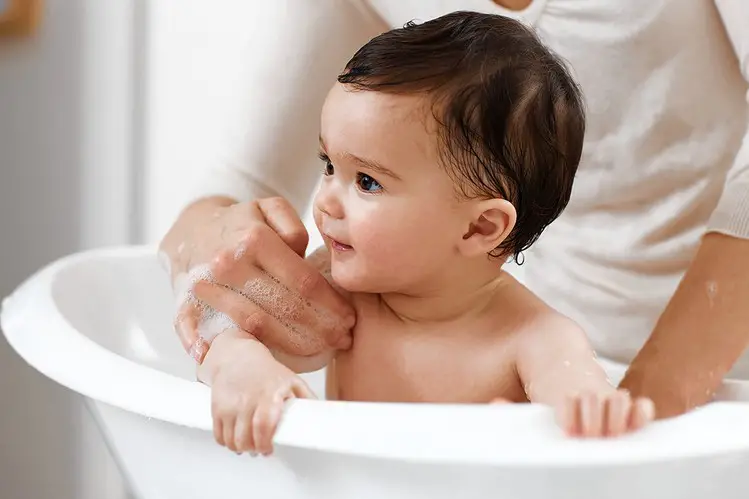Atopic dermatitis is believed to affect more than 10% of children in the United States, so what home treatments for baby Eczema can be used? In 85% of the cases in a 2014 report from the American Academy of Pediatrics (AAP), the skin condition develops before the age of 5 with more than half appearing in the first year of a child’s life.
Before we start off, we have an Eczema Facebook support group. Join our community!
Where can atopic dermatitis appear?
It should be noted that older children and adults have more flare-ups on their hands and feet, with joints a common location as well. It can be severely discomforting and can affect the quality of life by sleep interruption and hindering daily activities.
For infants, Eczema can usually be found in these locations on the body:
- Torso
- Scalp
- Cheeks
- Extremities
Goals for Treating Baby Eczema
Before we dive into what home treatments you can use, it is important to set a goal when it comes to tackling Eczema.
It is important to maintain a skin care routine, while keeping the triggers at bay. This can help repair and maintain healthy skin, while avoiding any flare-ups. It should be noted that itch control is highly vital when it comes to tackling Eczema as scratching generally increases the severity of the itch.
1. Identify the Eczema Triggers
Before you set out finding what products to use or try, the most important thing you can do is finding out the cause of flare-ups. The most common triggers for babies are things that touch their skin rather than their environment. Stress can also cause flare-ups. Things to look out for:
- Fragrances
- Non breathable fabric
- Rough fabrics
- Excess saliva
- Sweat, check the temperature of the baby
- Harsh soaps and detergents
2. A Lukewarm Bath with Moisturizer

This is one of the most effective things you can do to treat Eczema at home, especially for babies. A short daily lukewarm bath for 5 to 10 minutes is beneficial if you immediately apply moisturizer after.
Some babies enjoy baths, some do not. Pay attention to the child’s response when giving them a bath. Every child is different, so take note of how they react. Stay away from any synthetic soaps or cleansing agents that have harmful ingredients like fragrance.
Afterwards, gently pat your baby dry after the bath. Do not pat them completely dry as you want to leave some moisture on their skin. Apply moisturizer on the damp skin.
3. Ointments (no steroids)
Studies have found that skin ointments can be used effectively in treating Eczema as they can keep more moisture in. Babies sometimes do not like the feeling of skin ointment, so pay attention to how they respond. Moisturizing lotion is a lot lighter and not as greasy.
NOTE: Do not use steroid creams. For more information on the matter, click the link here.
The best ointments to choose are the ones with the most natural formula. Before buying any new ointment, read the ingredients to ensure that there is nothing harmful. A good website to use to analyze ingredients is 1Source.com. Avoid anything with preservatives or fragrances, as these can irritate skin.
Fun fact, prescription creams are no better than over-the-counter moisturizers for Eczema.
4. Wet Dressing

Wet Dressing
Something I remember well as a child. Wet dressing is used to keep Eczema moist. Wet dressings should only be used for severe cases of Eczema, as it is recommended to stay at home through the duration of the dressing. This method is to ensure the creams applied get absorbed into the skin.
Here is a rough guide of how to apply a wet dressing:
- A lukewarm bath with moisturizer
- Gently pat the skin till it is damp
- Apply the creams and moisturizers
- Use cotton clothing or wet gauze with clean warm water and apply to affected area
- Apply a dry layer of clothing. Leave the dressing for at least three to eight hours (best done overnight).
We hope these home treatments for baby Eczema tips helped you. For more Eczema articles, please visit here.

